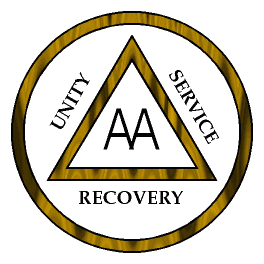Lesson 4: Fundamental Components of Recovery
Attention
Recovery is a process that has many different meanings in our society. Some of us are still in recovery from September 11 Twin Towers attack. Others may be more familiar with the Alcoholic Anonymous 12 steps to recovery, still others from some other tragic or unpleasant traumatic experience.
The recovery philosophy of AA has influenced many other areas of recovery including recovery from mental illness.
Learning Outcomes
Upon completion of this lesson's material, students will be able to:
- Explain the National Consensus Statement on Mental Health Recovery
- List and analyze the importance of the ten fundamental components of recovery as they relate to employment.
Teaching
Resource for the Consensus Statement of Mental Health Recovery
Review the Olmstead Decision and watch the video included in this lesson. Consider how the Olmstead decision assists person with disabilities feel included within thier communities.
The Federal government issued the National Consensus Statement on Mental Health Recovery which is based on significant research demonstrating the importance of this philosophy for direct care providers to facilitate success for the consumer. The statement poses ten fundamental components of recovery as they relate to employment. While these have been specifically issued for individuals with Mental Health disabilities, they also cover Co-occurring Disorders (formerly dual diagnosis) which commonly include a mental health DSM diagnosis combined with Alcoholism or Drug Abuse.
|
10 Components of Recovery Self-Direction: Consumers lead, control, exercise choice over, and determine their own path of recovery by optimizing autonomy, independence, and control of resources to achieve a self-determined life. By definition, the recovery process must be self-directed by the individual, who defines his or her own life goals and designs a unique path towards those goals. Individualized and Person-Centered: There are multiple pathways to recovery based on an individual’s unique strengths and resiliencies as well as his or her needs, preferences, experiences (including past trauma), and cultural background in all of its diverse representations. Individuals also identify recovery as being an ongoing journey and an end result as well as an overall paradigm for achieving wellness and optimal mental health. Empowerment: Consumers have the authority to choose from a range of options and to participate in all decisions—including the allocation of resources—that will affect their lives, and are educated and supported in so doing. They have the ability to join with other consumers to collectively and effectively speak for themselves about their needs, wants, desires, and aspirations. Through empowerment, an individual gains control of his or her own destiny and influences the organizational and societal structures in his or her life. Holistic: Recovery encompasses an individual’s whole life, including mind, body, spirit, and community. Recovery embraces all aspects of life, including housing, employment, education, mental health and healthcare treatment and services, complementary and naturalistic services, addictions treatment, spirituality, creativity, social networks, community participation, and family supports as determined by the person. Families, providers, organizations, systems, communities, and society play crucial roles in creating and maintaining meaningful opportunities for consumer access to these supports. Non-Linear: Recovery is not a step-by-step process but one based on continual growth, occasional setbacks, and learning from experience. Recovery begins with an initial stage of awareness in which a person recognizes that positive change is possible. This awareness enables the consumer to move on to fully engage in the work of recovery. Strengths-Based: Recovery focuses on valuing and building on the multiple capacities, resiliencies, talents, coping abilities, and inherent worth of individuals. By building on these strengths, consumers leave stymied life roles behind and engage in new life roles (e.g., partner, caregiver, friend, student, employee). The process of recovery moves forward through interaction with others in supportive, trust-based relationships. Peer Support: Mutual support—including the sharing of experiential knowledge and skills and social learning—plays an invaluable role in recovery. Consumers encourage and engage other consumers in recovery and provide each other with a sense of belonging, supportive relationships, valued roles, and community. Respect: Community, systems, and societal acceptance and appreciation of consumers —including protecting their rights and eliminating discrimination and stigma—are crucial in achieving recovery. Self-acceptance and regaining belief in one’s self are particularly vital. Respect ensures the inclusion and full participation of consumers in all aspects of their lives. Responsibility: Consumers have a personal responsibility for their own self-care and journeys of recovery. Taking steps towards their goals may require great courage. Consumers must strive to understand and give meaning to their experiences and identify coping strategies and healing processes to promote their own wellness. Hope: Recovery provides the essential and motivating message of a better future— that people can and do overcome the barriers and obstacles that confront them. Hope is internalized; but can be fostered by peers, families, friends, providers, and others. Hope is the catalyst of the recovery process. Mental health recovery not only benefits individuals with mental health disabilities by focusing on their abilities to live, work, learn, and fully participate in our society, but also enriches the texture of American community life. America reaps the benefits of the contributions individuals with mental disabilities can make, ultimately becoming a stronger and healthier Nation. |
Successful community based programming has evolved to a community based individual recovery process or model from an institutional model. This transition started after the Olmstead Decision required treatment professionals to adapt their methods to a more community oriented approach. The ideal of this approach promotes giving the individual consumer more choices and increases their responsibility to make those choices. In institutional settings individual choice was almost non existent.
However, in the community, this system of treatment adds significant responsibility to the individual consumer. Unless the client makes a conscious choice to recover, it probably will not happen. While there still may be a need for medication and other medical treatment when biomedical imbalance exists, this new process transcends the medical model with a significant paradigm shift. It adds a spiritual dimension to the healing process. The spiritual dimension adds the awareness that some consciousness exists beyond one's ego and body. The consumer accepts where they are, becomes present in the moment and does what needs to be done. This is spiritual in that it relies on faith in something yet unseen. Some people choose to relate this to a higher power. Others consider it a function of the mind, in any event the belief that a better situation is possible must be held by the consumer before adaptation to the community occurs.
This way of thinking can be encouraged and nurtured by the community rehabilitation professional but ultimately the consumer must make this attitude their own. Recovery will not begin to happen until the client believes it is possible and the awakened consciousness of this possibility is present. Community rehabilitation professionals (e.g., case managers, employment specialists, job coaches, and other community support staff) certainly have a significant role to play in encouraging consumers to recover, but ultimately it is the responsibility of the consumer.
Assessment
Lesson 4 Discussion
Share stories in regard to your own process of recovery or achievement. Achievement can follow the same sort of process as recovery.
For this assignment you are going to create a presentation which tells the story you wish to tell. There are some choices in terms of how you want to create a presentation For more information on creating videos on your iPad click HERE. Post a link to your presentation in the Discussion board. |
Lesson 4 Quiz
Review the 10 Components of Recovery across the various resources in the Lesson Plan. Select three and explain how each component would be important in relation to employment
The questions in the actual quiz are going to appear as they do below:
- Component #1
- Component #2
- Component #3

